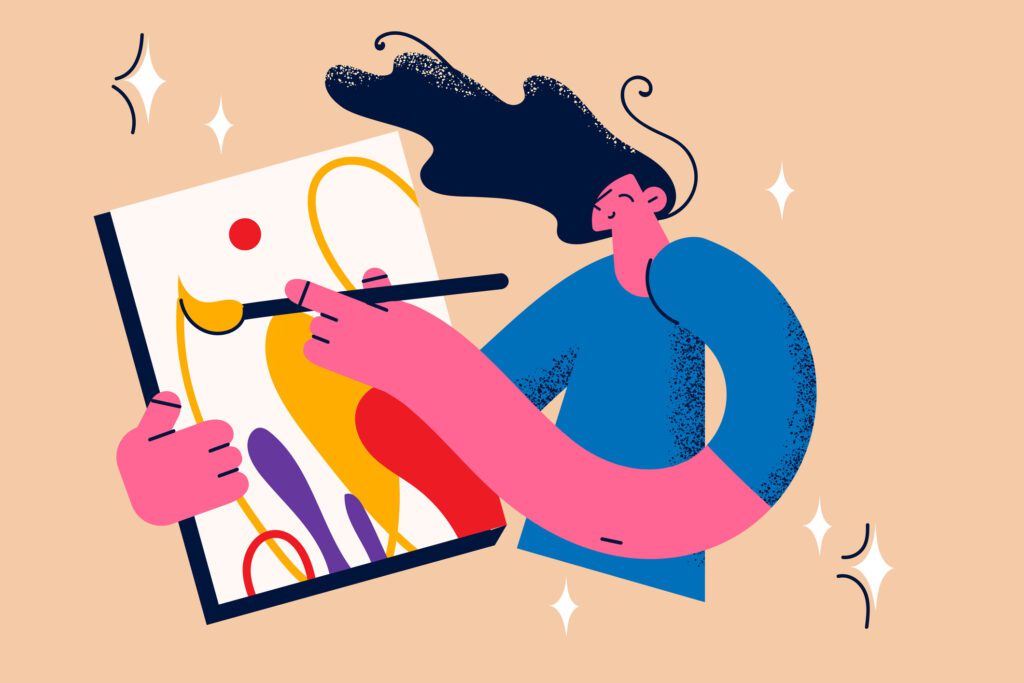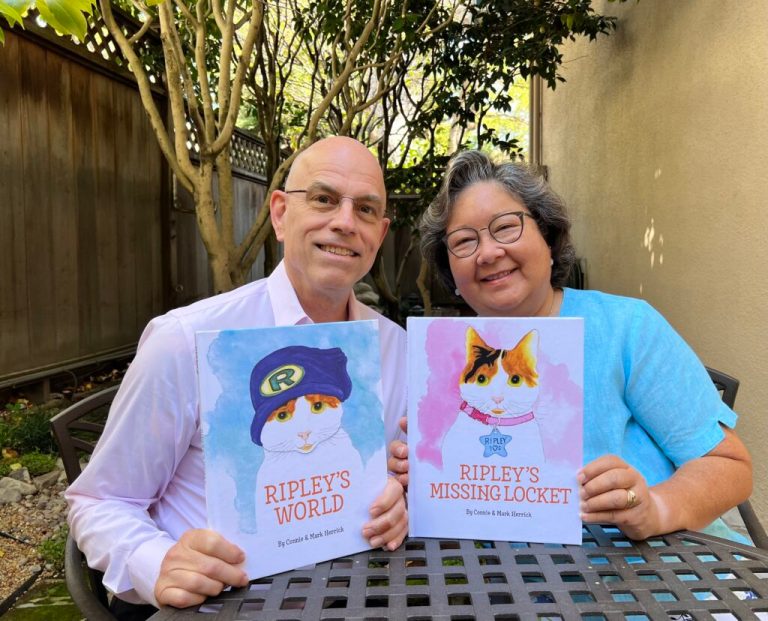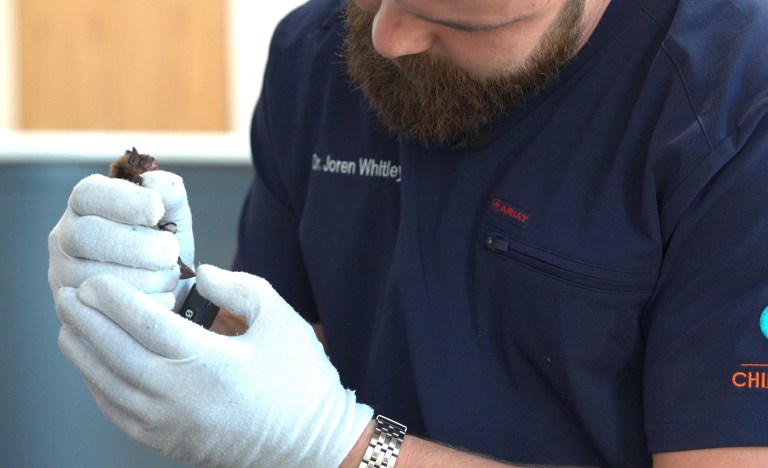What do you like to do in your free time? That simple question might be surprisingly difficult to answer. It makes sense: With responsibilities, to-dos, and major world events, the pursuits that bring us joy often get overlooked. However, having fun isn’t frivolous; it’s necessary.
Research shows that when we’re doing uplifting activities, our bodies produce “happy hormones” — including serotonin, dopamine, and endorphins — which help us bond with others, feel empathy, learn, and regulate our digestion. And a Swiss study revealed that “playful adults” led happier, healthier, and more satisfying lives.
In honor of January being National Hobby Month, we compiled a list of hobbies for you to consider sprinkling into your routine for a dose of play (and a mental health boost). You may notice the more you embrace enjoyable leisure activities, the more other areas of your life improve, like your mood, relationships, focus, and well-being. In this sense, engaging in a hobby can truly be a gift that keeps on giving.
Note: If you’re nervous to try something new, take Adrianna Adarme’s advice on hobbies from her book The Year of Cozy: “Be OK with not being good.” Forget perfection. You’re doing this for fun, after all!
Write Poetry

There is something soul-filling about reading poetry, and writing poetry delivers its own set of benefits. Research shows this creative practice may provide comfort and boost your mood during stressful periods and even help combat loneliness. For daily inspiration, read the Poem of the Day from the Poetry Foundation.
To get started: Intimidated just by the thought of writing poetry? Remember, you’re writing for you! Look into short-form poetry, like haikus or limericks, which can feel more attainable. We also recommend reading MasterClass’ “11 Rules for Writing Poetry for Beginners” guide.
Collect Something You Love
View this post on Instagram
Chances are we all gravitate toward something that can be a joy to collect. Maybe stickers, shells, postcards, or stamps. Or perhaps it’s something more specific, like colorful coasters from each U.S. state, memorabilia from your favorite artist, vintage playing cards, first editions, or quirky Halloween decorations. Whatever it is, the experience of anticipating your next find and creating a collection that makes you smile is what matters.
Dr. Shirley M. Mueller writes in Psychology Today, “The anticipation of the reward is more exciting to our pleasure center than possessing it. This explains, in part, why collecting frequently transcends a mere pastime and often becomes a passion. It gives sufficient pleasure that the participant wants to continue it more and more vigorously.”
If you’re worried about clutter, consider the “one in, one out” method, which is essentially making the effort to let go of something you don’t need (via recycling, donating, etc.) every time you get something new.
To get started: Reflect on something you enjoy (or enjoyed as a kid), think about what could be realistic for your space and budget, and then start browsing around to see what speaks to you.
Explore Your Family History

If you’re interested in learning about your lineage, consider looking into genealogy as a hobby. The internet holds a wildly massive world of information about your family history, which can deepen your understanding and appreciation of your roots — and possibly introduce you to long-lost kin you didn’t know about. You may even feel inspired to write a story of your own.
Keep in mind, this experience can possibly lead to an emotional reaction. Harvard Health explains, “Discovering ‘new’ family members through DNA genealogy testing can trigger a wide range of emotions, including happiness, anxiety, sadness, or even anger.” Before you begin, it’s recommended to reflect on the motivation for your search, provide space for family members to share their thoughts, and prepare for the results.
To get started: Interview family members who might have knowledge about your shared genealogy. Ancestry.com and FamilySearch.org are also good places to assist with your search.
Start a Reading Challenge
According to Statista, reading is the second most popular hobby in the U.S. (the first is cooking/baking). If you’re already a book lover and interested in putting a twist on your reading routine, try a reading challenge.
For example, The 52 Book Club’s 2024 Reading Challenge is an effective and enjoyable way to branch out and discover different authors and genres. Or take advantage of Goodreads’ Reading Challenge, which allows you to set your reading goal (how many books you want to read throughout the year) and track your progress as you turn your pages.
To get started: Pick a challenge, or make one of your own, and start reading away!
Sculpt With Polymer Clay
There are so many ways you can use polymer clay to craft unique pieces for your home — from cute figurines to vases and dishes. However, polymer clay is one of our favorite ways to make jewelry.
View this post on Instagram
It’s not only easy to work with and requires only a handful of tools to get started, but the process of making the shapes is soothing and meditative (think: pretty Play-Doh). Not to mention, you end up with creative jewelry you made yourself.
To get started: Look into this polymer kit or visit your local crafts store.
RELATED: Got 10 Minutes? Short Bursts of Activity Linked to Lower Heart Disease Risk
Learn a New Language
If you regret not remembering everything you learned in your high school foreign language class, your brain will want to say “thank you” (or arigato, merci, or gracias) for finally taking up this hobby. Learning a new language is shown to boost mental agility, increase empathy, and lead to benefits on a neurological level. You may also find yourself feeling more curious and improving your memory.
To get started: From apps like Duolingo and Babbel to online classes and free YouTube tutorials, there are many language learning resources to jumpstart your road to multilingualism.
Nurture Your Green Thumb
Cultivating a garden is a beautiful way to nurture life and watch it grow before your eyes —- and it’s also a great form of exercise that provides a whole host of health benefits. It’s been shown to decrease anxiety and depression and increase emotional well-being, and a study of over 2,800 participants found that daily gardening reduced the risk of dementia by 36%.
If you’re tight on space or interested in growing something more low-key, consider herbs. According to Gardenary, the plants are low-maintenance, don’t require lots of sunlight, and are able to thrive in limited space.
To get started: Decide what you want to grow and where you want to keep your plants, and check out our list of must-have gardening products.
Make Unique Flower Arrangements
Much like gardening, working with flowers fosters a connection with nature, which is beneficial in itself. It’s also a wonderfully meditative way to tap into the creative process of working with colors, shapes, and textures — and you end up with a beautiful arrangement that can brighten your home or be a just-because gift for a friend.
To get started: Before heading to your local grocery store or farmers market, watch the video above for some tips from Rajiv Surendra (whom you may recognize from Mean Girls). Then grab your favorite vase, some floral shears, and let your creative juices flow!
Try Punch Needling
Videos of punch needling are all over social media — and the act of actually doing the needling is just as (if not more) relaxing as watching the process. The super simple form of embroidery involves “punching” thread through monks cloth, which creates a small loop of yarn.
The method is commonly used to create rugs, cushions, and other textiles, but it can also be used to create smaller items like pillow covers, wall art, totes, stuffed animals, and so much more. Best of all, this craft involves repetitive steps, so you can easily get into a flow while unwinding and soaking up the benefits of making something with your hands.
View this post on Instagram
To get started: Explore the range of punch needling kits, including desert-themed and floral designs.
Embrace Outdoor Activities
Birdwatching soared in popularity during the pandemic, along with forest bathing (or shinrin-yoku), which “involves taking deep breaths and experiencing the forest with full presence,” per Stanford University. Both are peaceful ways to unplug, connect to the present moment, and slow down. They’re also activities people of all ages can enjoy, either solo or with a group, for hours or just a few minutes.
To get started: Research local birding clubs and guided forest therapy communities — or simply go outside and look around at the nature in your neighborhood.
Start Stargazing
Tired of looking down at your screens? Astronomy is all about doing the opposite: looking up! From learning the names of stars and constellations to participating in celestial events, the sky’s the limit when it comes to exploring the cosmic world.
To get started: Sky and Telescope recommends getting binoculars and diving into sky maps. Then grab a chair and cozy blanket, sit back, and simply gaze up at the majestic universe above awhile.
More Hobbies You May Not Have Thought to Try:
- Calligraphy
- Mixology
- Ebru art
- Embroidery
- Origami
- Tai chi
- Pizza or pasta making
- Roller-skating
- Painting
- Ceramic-making
- Cycling
- Woodworking
- Pressed-flower art
- Dance classes
- Host game nights
- Throw themed parties
- Restore furniture
- Get into upcycling
- Puzzles
- Make curated playlists
RELATED: 15-Minute Activities to Give Your Brain and Body a Boost












